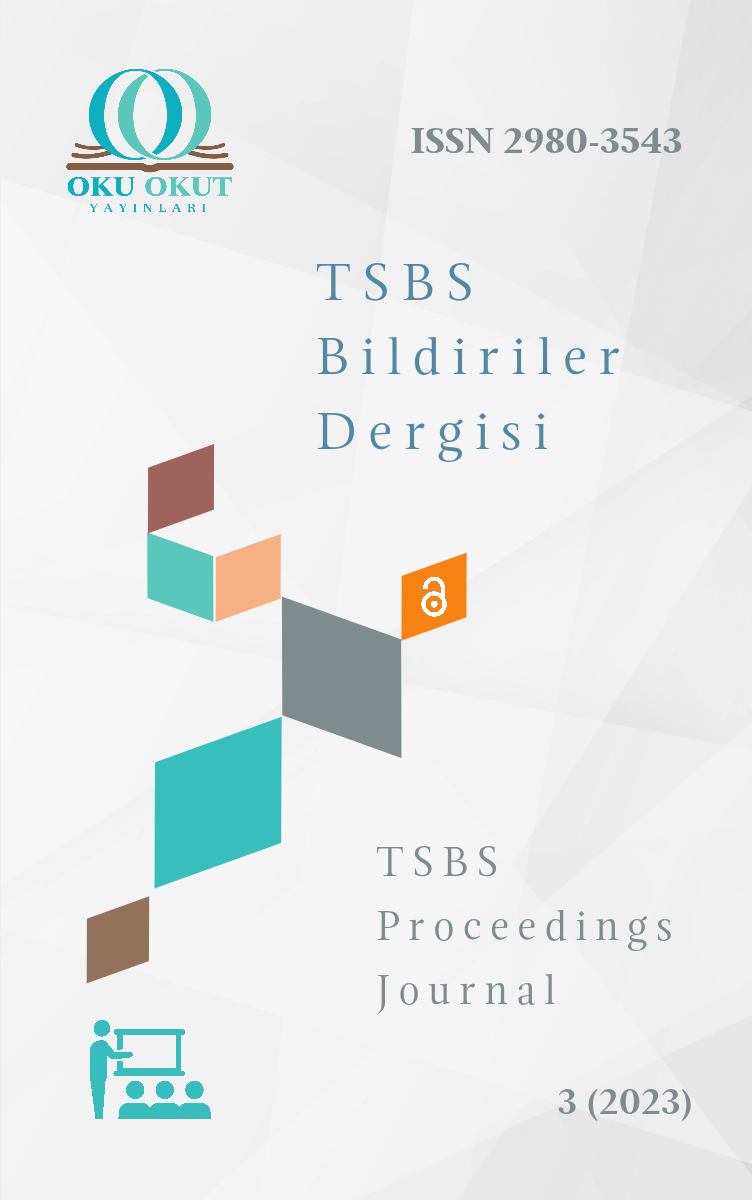Examining the Social State Models of Titmuss, Therborn, and Andersen
Titmuss, Therborn ve Andersen’in Sosyal Devlet Modellerinin İncelenmesi
States have been affected by many situations, such as the agricultural revolution and the industrial revolution throughout history, socially, economically, and politically. This situation has affected and transformed the management models applied by the states. At this point, following the industrial revolution, after the 1929 economic crisis, the states revealed the concept of the social state by changing their administration and political structure. The social state period, especially with the spread from the beginning of the 20th century. It is the period in which countries provide intensive welfare services in the process called the "Golden Age" until the 1970s after World War II. Countries have different degrees of implementation of these welfare services, stemming from the structure and ideology of each state. This difference has revealed the formation of different social welfare regimes in each country and various social state models that make their classifications. This research is very important in terms of revealing which country is included in which social state regime and important developments in the political, economic, and social fields in the 20th century by analyzing the three social state models that reflect the diversity and classification of social welfare services in each country. The main purpose of the research is to compare and analyze the three social state models, to add a new dimension to the understanding of the social state, to emphasize the differences in the social welfare services of the countries, and to draw attention to the approaches of the social state models classified according to these differences. To examine different social state models, a detailed literature review method was used by examining books and articles about the relevant researchers. With the information obtained, especially Titmuss, Therborn, and Andersen's social state models were analyzed. In this context, it is emphasized that each of them makes different classifications according to their different approaches, and each country is included in a different social state model. When each welfare state model is examined, Titmuss classifies it as residual welfare, industrial welfare, and institutional-redistribution welfare, while Therborn classifies it by considering the level of social rights offered by the welfare state and its approach to the labor market and full employment. Andersen's classification is the most extensive and detailed social state approach among the models, and he has classified it according to criteria such as the institutionalization of social rights and the exclusion of basic needs from the market. In addition, Andersen showed its difference from other researchers by including a new classification called decommodification. As a result, Andersen's model has a broader understanding of welfare state and has been seen to classify welfare states more comprehensively compared to other models in classifying welfare states. The fact that Tismuss, Therborn, and Andersen each put forward different approaches to the welfare state and create models means that the ideology and political approach of each welfare state can be better understood.
Devletler, tarih boyunca karşılaştığı tarım devrimi, endüstri devrimi gibi birçok durumdan toplumsal, ekonomik ve siyasal açıdan önemli ölçüde etkilenmişlerdir. Bu durum, devletlerin özellikle uyguladığı yönetim modellerini etkileyip dönüştürmüştür. Bu noktada, endüstri devriminin ardından 1929 ekonomik kriz sonrası devletler, yönetim ve siyasal yapısını değiştirmesiyle sosyal devlet kavramını ortaya çıkarmışlardır. Sosyal devlet dönemi, özellikle 20. yüzyılın başlarından itibaren yayılması ile Ⅱ. Dünya Savaşı sonrası 1970’lere kadar ki ‘Altın Çağı’ olarak adlandırılan süreçte, ülkelerin yoğun olarak refah hizmetlerini sundukları dönemdir. Ülkelerin bu refah hizmetlerini, her devletin yapısından ve ideolojisinden kaynaklı farklı uygulama dereceleri vardır. Bu farklılık, her ülkede farklı sosyal refah rejimlerinin oluşmasını ve bunların sınıflandırmalarını yapan çeşitli sosyal devlet modellerini ortaya çıkarmıştır. Bu araştırma, her ülkedeki sosyal refah hizmetlerinin farklılığını ve sınıflandırmasını yansıtan üç sosyal devlet modelini analiz ederek, hangi ülkenin hangi sosyal devlet rejimine dâhil olduğunu ve 20. yüzyıldaki siyasal, ekonomik ve toplumsal alandaki önemli gelişmeleri ortaya koymak açısından oldukça önemlidir. Yapılan araştırmayla üç sosyal devlet modelinin karşılaştırılarak analiz edilmesi, sosyal devlet anlayışına yeni bir boyut kazandırmak, ülkelerin sosyal refah hizmetlerindeki farklılığını vurgulamak ve bu farklılıklara göre sınıflandırılan sosyal devlet modellerinin yaklaşımlarına dikkat çekmek temel amaçtır. Farklı sosyal devlet modellerini incelemek için ilgili araştırmacılar hakkında kitap, makale incelemesi yapılarak detaylı bir literatür taraması yöntemi kullanılmıştır. Elde edilen bilgilerle, özellikle Titmuss, Therborn ve Andersen’in sosyal devlet modelleri analiz edilmiştir. Bu bağlamda, her birinin farklı yaklaşımlarına göre farklı sınıflandırma yaptıkları ve her ülkenin farklı sosyal devlet modeline dâhil olduğu vurgulanmıştır. Her bir sosyal devlet modeli incelendiğinde, Titmuss kalıntı refah, endüstriyel refah ve kurumsal-yeniden bölüşümcü refah şeklinde tasnif yaparken, Therborn tasnifini sosyal devletin sunduğu sosyal hakların düzeyi ve emek piyasası ile tam istihdama yaklaşımı göz önüne alınarak yapmıştır. Andersen’in tasnifi ise modellerin içerisindeki en geniş ve detaylı sosyal devlet yaklaşımı olup, sosyal hakların kurumsallaşması ve temel ihtiyaçların piyasa dışına çıkarılması gibi ölçütlere göre tasnifini yapmıştır. Ayrıca, Andersen dekomodifikasyon denilen yeni bir tasnife de yer vererek diğer araştırmacılardan farklılığını ortaya koymuştur. Sonuç itibariyle, sosyal devletleri sınıflandırmada diğer modellere kıyasla Andersen’in modeli, daha geniş bir sosyal devlet anlayışına sahiptir ve sosyal devletleri daha kapsamlı bir şekilde tasnif ettiği görülmüştür. Tismuss, Therborn ve Andersen’in her biri sosyal devlete yönelik farklı yaklaşımlar ortaya koymaları ile modeller oluşturmaları, her bir sosyal devletin ideolojisi ve siyasi yaklaşımının daha iyi kavranabileceği anlamına gelmektedir.

Telif Hakkı (c) 2023 Büşra Tekcan (Doktora Öğrencisi)
Bu çalışma Creative Commons Attribution-NonCommercial 4.0 International License ile lisanslanmıştır.
CC BY-NC 4.0 lisansı, eserin ticari kullanım dışında, her türlü ortam ve formatta paylaşılmasına, kopyalanmasına, çoğaltılmasına ve orijinal esere uygun şekilde atıfta bulunmak kaydıyla yeniden düzenlenmesine, dönüştürülmesine ve eser üzerine inşa edilmesine izin verir.
Makale Bilgileri
- Konu Sosyoloji
- Gönderim 22 Temmuz 2023
- Yayım 15 Ağustos 2023
- Sayı Sempozyum 3 (2023): TSBS Bildiriler Dergisi
- Bildiri Bilim Alanı Sosyoloji
- Kategoriler
Tekcan, Büşra. “Titmuss, Therborn Ve Andersen’in Sosyal Devlet Modellerinin İncelenmesi”. Türkiye Sosyal Bilimler Sempozyumu 3 (August 15, 2023), 29-32. https://doi.org/10.55709/TSBSBildirilerDergisi.444






